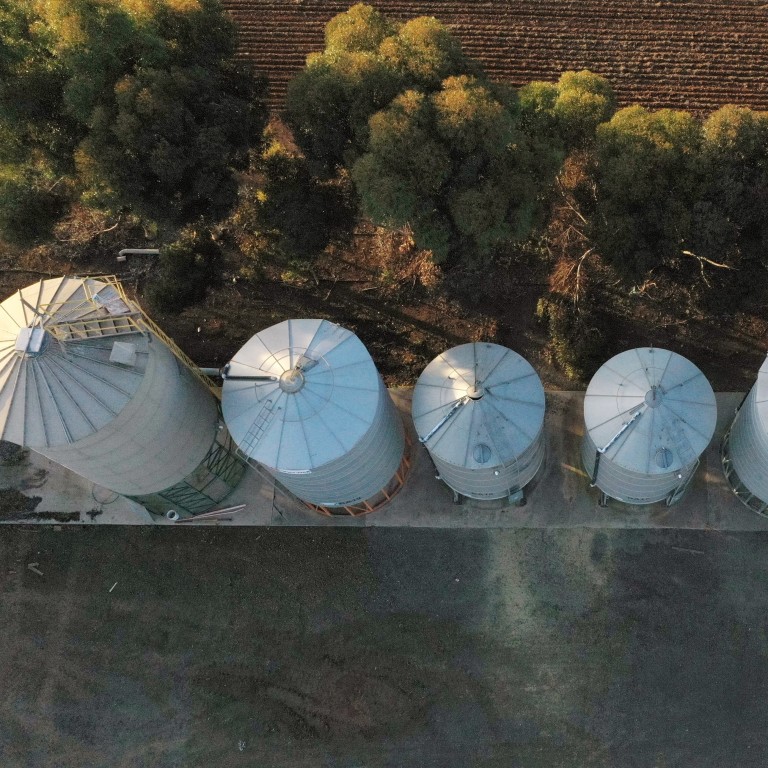
China-Australia relations: barley farmers begin harvest under cloud of Beijing’s tariffs
- China confirmed in May that it would impose a tariff of 80.5 per cent on Australia’s barley exports following the conclusion of its anti-dumping investigations
- Two-way trade between China and Australia is worth around A$240 billion (US$175 billion), while China buys around 39 per cent of Australia’s merchandise exports
Out in Australia’s grain fields, farmers have started harvesting one of their biggest ever barley crops, after drought-relieving rains convinced many to plant to the edges of their paddocks.
The diplomatic row between a major exporter and the world’s second-biggest importer is prompting a rapid reconfiguration of global trade in the grain used primarily in beer production and livestock feed.
“As an industry we became too reliant. We had a neighbour happy to pay for our good quality grain, we did probably get complacent,” said Lyndon Mickel, a grains farmer in Western Australia’s southern grain belt.
“This has taught us a lesson to have plenty of diversity in the market to make sure we don’t fall into that situation again.”

01:15
China-Australia trade: Beijing set to ban nearly US$400 million worth of Australian wheat imports
Australia typically accounts for up to 40 per cent of the world’s malting barley trade, used in beer production, and 20 per cent of feed barley. Well over half its total exports, around 6 million tonnes in a good year, go to China, the world’s biggest beer maker.
This will now either be stored, sold domestically or sent to alternate markets, such as top buyer Saudi Arabia, if new deals can be negotiated.
China, meanwhile, is seeking alternate supplies, benefiting grain farmers as far away as France, Ukraine, Argentina and Canada.
There’s a liquidity issue in the market and when China comes in with additional requirements that pushes prices up
Brent Atthill, managing director of RMI Analytics, a Swiss consultancy that specialises in brewing ingredients, said the barley supply chain has been put under strain.
“There’s a liquidity issue in the market and when China comes in with additional requirements that pushes prices up,” said Atthill, who expects the buying pressure to remain for at least another three months.
Barley prices around the world have risen strongly – except in Australia, where prices are down more than 10 per cent this year.
French farmers are responding to the Chinese demand, with high barley volumes flowing to China despite France’s smaller-than-usual harvest this season.
Chinese buyers have more than doubled their purchases from Canada from a year ago, and now take more than four-fifths of the country’s barley exports.
This is helping lift domestic prices, said Peter Watts, managing director of the Canadian Malting Barley Technical Centre in Winnipeg.
Barley shipments from Argentina have also started streaming toward China after a three-year lull, which includes malt barley usually provided by Australia.
The country is set for an 11.2 million tonne barley crop, the second biggest in the past 30 years.
“A lot of people in this district have not harvested a worthwhile crop since 2016 so there’s a lot riding on this particular crop,” grains farmer Matthew Madden told Reuters at his family farm near the town of Moree in New South Wales.
Helping farmers, Australia is also predicting a bumper wheat crop, where the tariffs do not apply.
And the drought has created more demand for barley locally, as farmers replenish depleted stores, while China’s buying may open up export opportunities elsewhere.
“Australian barley should be attractive for export to the big Saudi Arabian market, so pushing out [European Union] and Black Sea exporters,” a leading barley trader in Germany told Reuters.
The fact is they put it on, we’ll have to live with that and continue to try explain we are not subsidised – we don’t believe it is fair,
With China’s tariff on Australian barley – an anti-dumping and anti-subsidy tariff totalling 80.5% – due to run for five years, the disruption to trade routes could be long-running.
“The fact is they put it on, we’ll have to live with that and continue to try explain we are not subsidised – we don’t believe it is fair,” Madden said.
“In the meantime, we’ll try to diversify markets and … use it domestically.”

